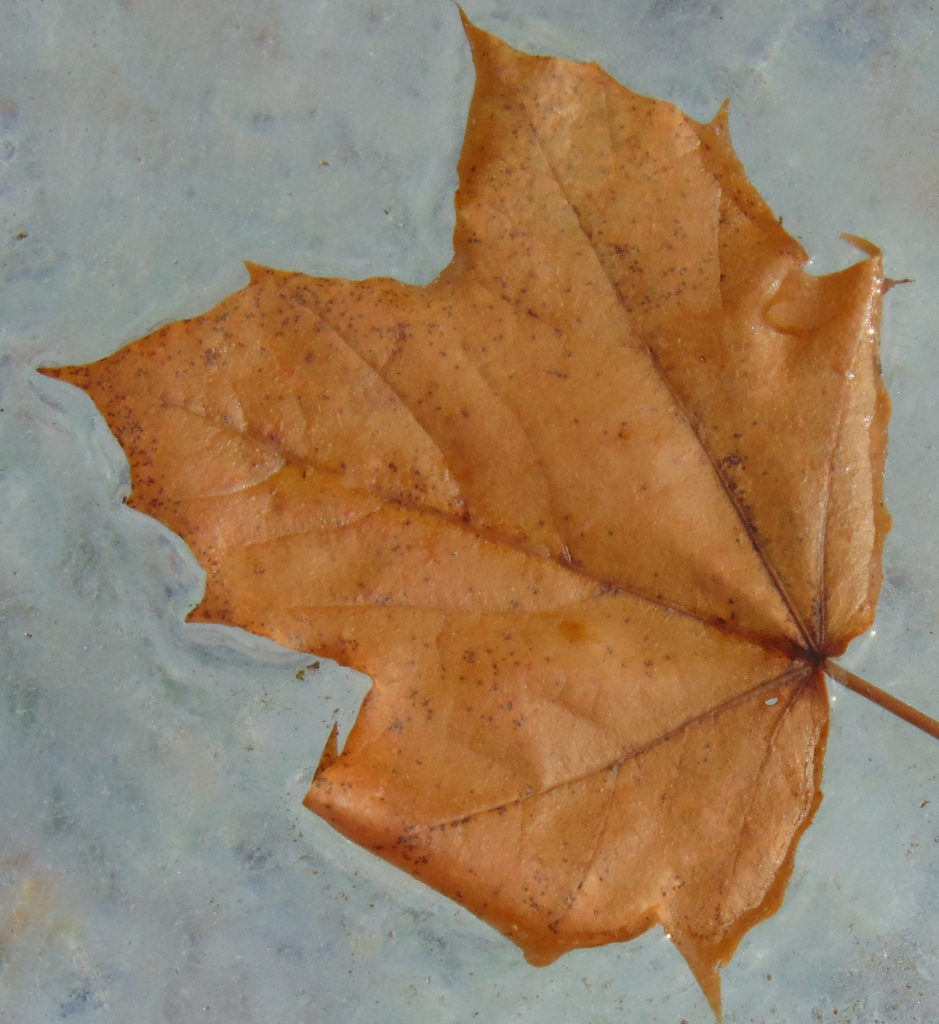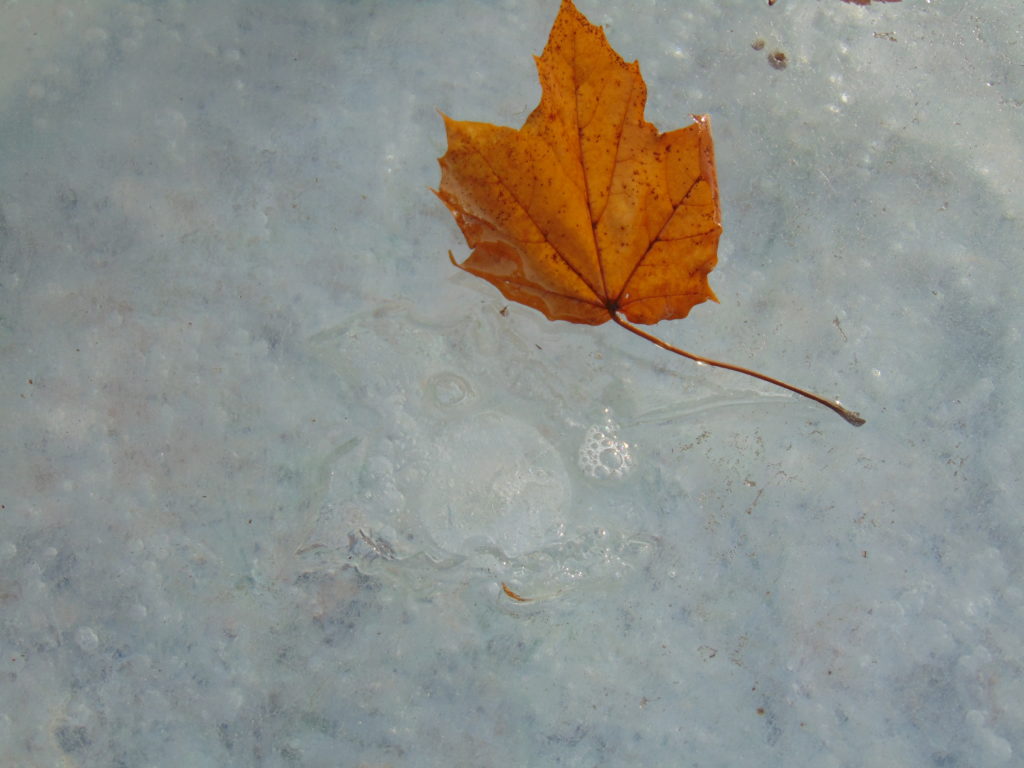
I used to teach at Shimer College, and one of the courses I taught frequently was Natural Sciences 3: The Nature of Light. As part of the final exam, I asked the students to select one of the Queries from Isaac Newton’s* Opticks and design an experiment to answer it. Extra credit was available for actually doing the experiment. One of the more popular choices was Query 6,
Do not black Bodies conceive heat more easily from Light than those of other Colours do, by reason that the Light falling on them is not reflected outwards, but enters the Bodies, and is often reflected and refracted within them, until it be stifled and lost?
Newton 1952, pp. 339-340
This is illustrated by leaves on an outdoor ice rink.
Here’s a leaf frozen onto the surface of my backyard rink. It’s not black, but it’s dark enough to illustrate the principle.

It’s a sunny day with a temperature right around freezing. I can skate on the ice just fine, but look what’s under the leaf:

It’s a little pool of water in a hole shaped just like the leaf! Clearly the leaf is causing the ice to melt. The sun’s rays must have heated it up, just like Newton said. What’s left to do is figure out what’s going on inside the leaf that makes it heat up. I’ll leave that as an exercise for the reader. Meanwhile, here’s a montage showing how the ice melts around a darker leaf over a few warm, sunny days.

This explains why it’s a bad idea to use black plastic sheeting or paint hockey lines on your backyard ice rink: they’ll make the ice melt! Of course, if it’s cold enough, the ice will be fine.
*Isaac Newton was born on Christmas Day, 1642. Happy Birthday!
References
Isaac Newton. 1952 [1704]. Opticks. New York: Dover Publications.

[…] It’s tempting to use black plastic to get black ice for figures, but don’t do it. The dark color absorbs the sun and melts your ice. Use white or clear plastic sheeting that’s preferably at least 6 mil thick. The timing of […]